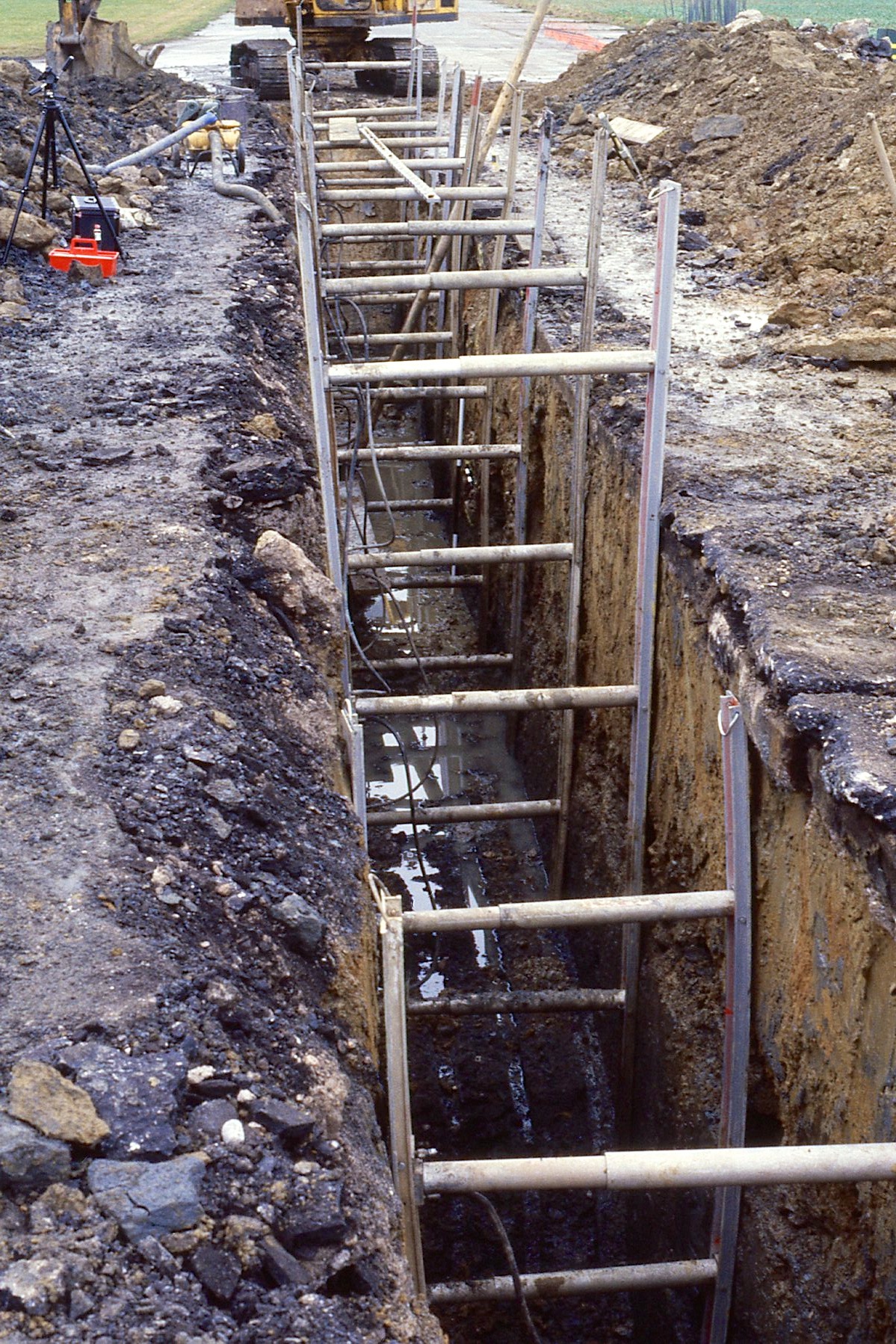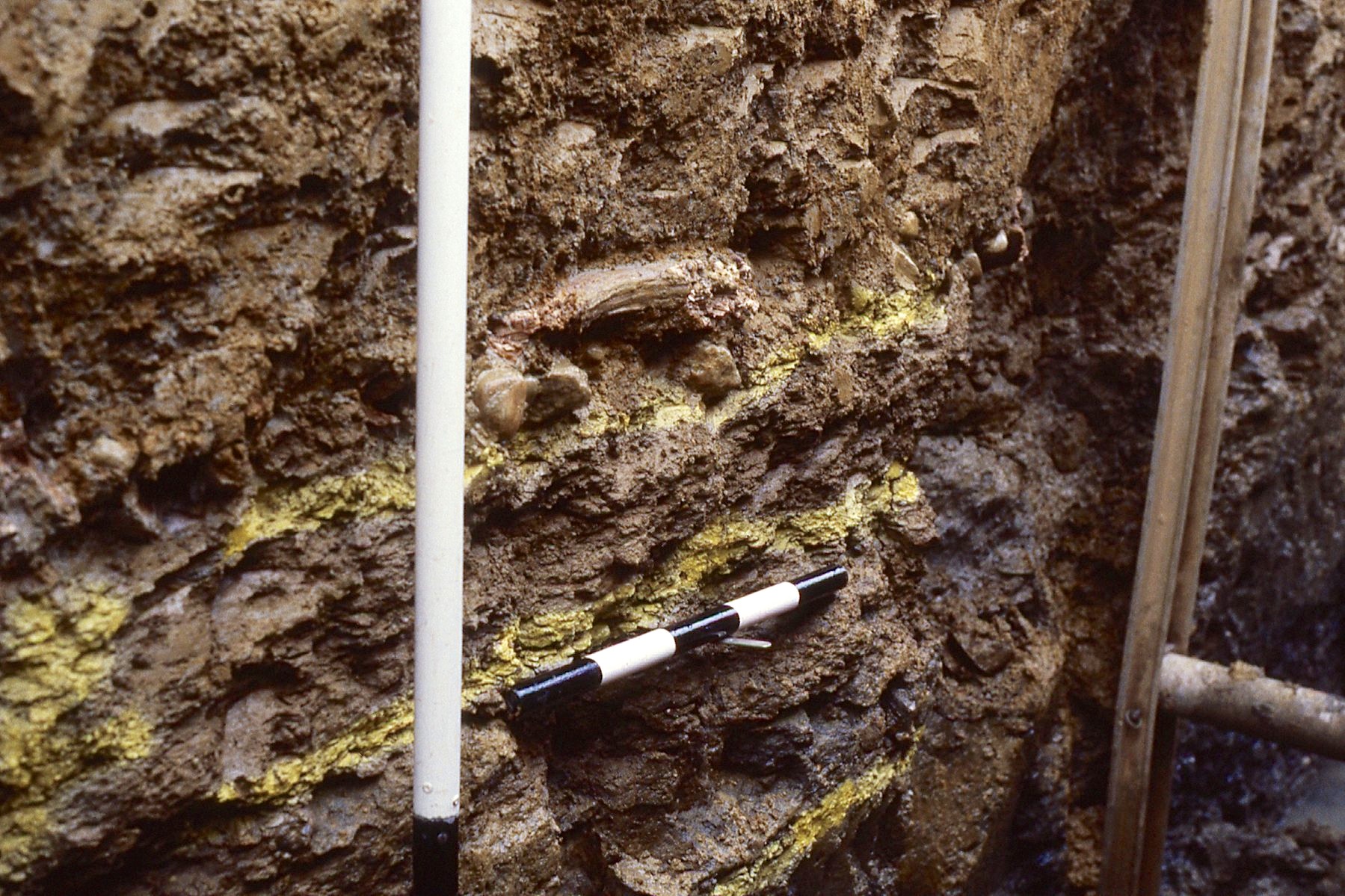During 1986 observation of geotechnical investigation trenches at Fulbeck Airfied was carried out as part of an assessment of the location as a potential storage facility for low-level radioactive waste.  No evidence for ancient human activity was found during exploratory trenching. However, animal bones from the Pleistocene period were discovered in a layer of fluvial gravel at an average depth of 1.2 m.
No evidence for ancient human activity was found during exploratory trenching. However, animal bones from the Pleistocene period were discovered in a layer of fluvial gravel at an average depth of 1.2 m.
An assessment of the bones was made by Dr Rogan Jenkinson. A total of 135 vertebrae bones were examined. All were in an extremely fragile state and have been conserved. One sample (Bovid) remains unconserved to provide opportunities for age estimation. The remains have been assigned to three species: Hippopotamus amphibius (Hippopotamus) at least three individuals; Bovid sp. (probably Bison) one individual; and Dicerorhinus hemitoechus (Steppe Rhinoceros) one individual. A small proportion of bones cannot be assigned to species. Two types of material are represented. Most of the remains, ignoring modern machine breakages, are fresh and cannot have been moved any significant distance post mortem. A smaller number of bones show extensive damage from rolling, indicating a reasonably high energy fluviatile environment capable of moving large bones some distance. See Brandon & Sumbler (1988) for a discussion of the Fulbeck deposits.
 The fauna is distinct, but the presence of Hippopotamus amphibius, Dicerorhinus hemitoechus, and the apparent absence of horse (Equus sp.) make this fauna of classical Ipswichian type (‘hippopotamus fauna’) which is usually correlated with Marine Isotope Stage 5e (MIS5e) and associated with mixed oak forest and local herbaceous vegetation. The discovery of such a well-preserved Pleistocene site is of considerable importance. This is a period where we have evidence for extremely rich mammal faunas and temperate forest flora and yet no trace of exploitation by man in Britain although there evidence for hominim presence in France and the Netherlands (Pettitt & White 2012).
The fauna is distinct, but the presence of Hippopotamus amphibius, Dicerorhinus hemitoechus, and the apparent absence of horse (Equus sp.) make this fauna of classical Ipswichian type (‘hippopotamus fauna’) which is usually correlated with Marine Isotope Stage 5e (MIS5e) and associated with mixed oak forest and local herbaceous vegetation. The discovery of such a well-preserved Pleistocene site is of considerable importance. This is a period where we have evidence for extremely rich mammal faunas and temperate forest flora and yet no trace of exploitation by man in Britain although there evidence for hominim presence in France and the Netherlands (Pettitt & White 2012).
The faunal remains are stored at Creswell Crags Museum & Heritage Centre.
Brandon, A. & M.G. Sumbler, 1988. An Ipswichian fluvial deposit at Fulbeck, Lincolnshire and the chronology of the Trent terraces. Journal of Quaternary Science, 3(2), 127-33.
Pettitt, P. & M. White, 2012. The British Palaeolithic: Human Societies at the edge of the Pleistocene World, London: Routledge.